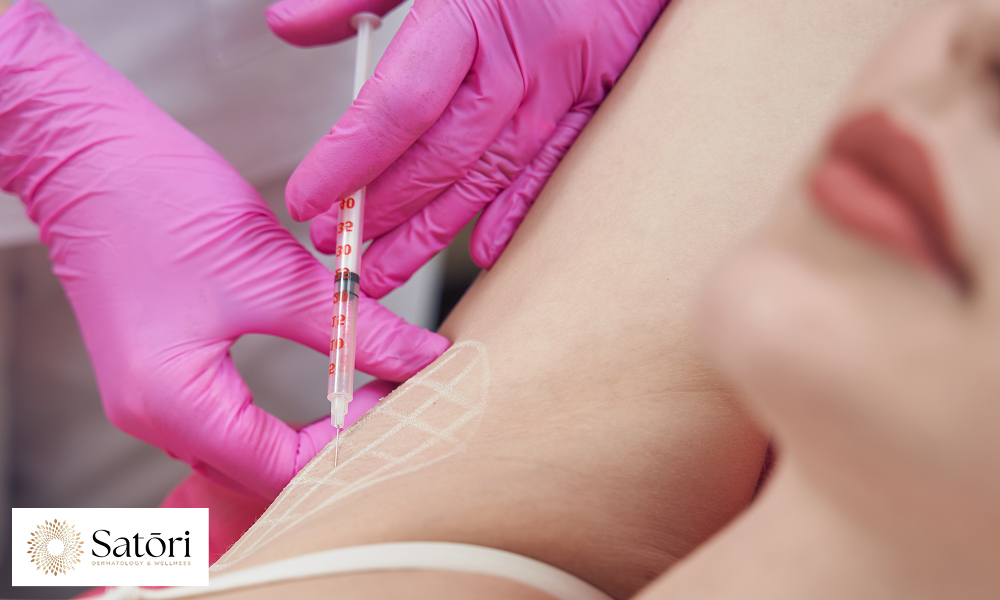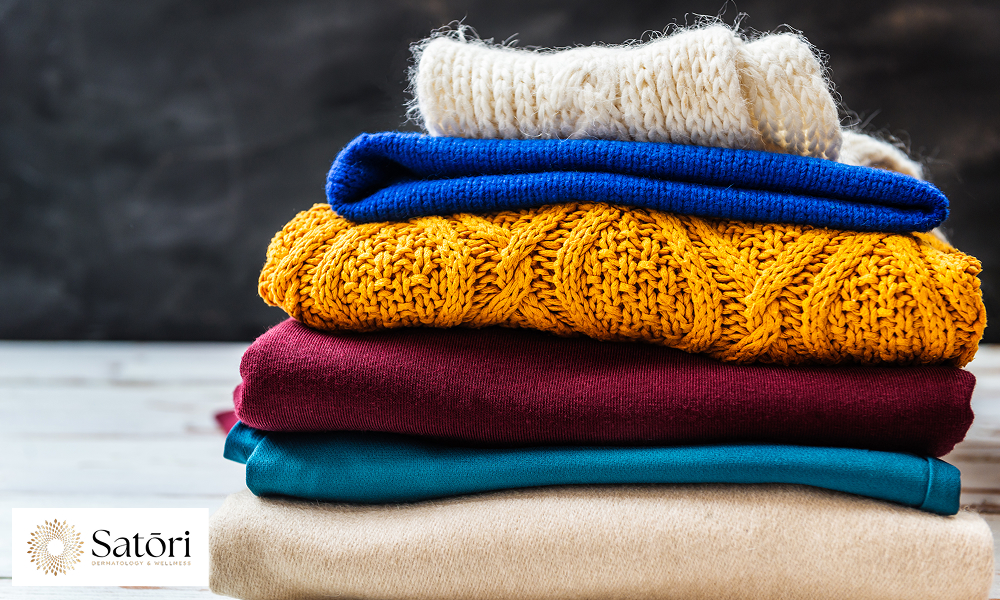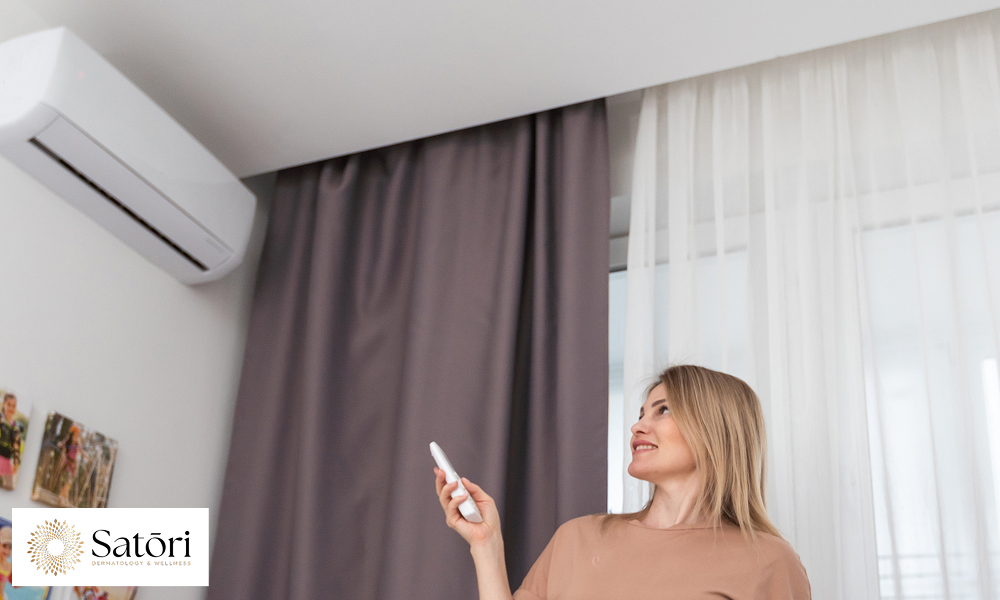Sweating is a natural and essential function. It helps cool the body and regulate temperature, especially during exercise, hot weather, or moments of stress. But for some, the amount of sweat produced can feel excessive—interfering with daily life, clothing choices, or social comfort.
Whether you’re dealing with mild sweating or something more persistent, like hyperhidrosis (a condition that causes excessive sweating), there are several ways to sweat less. From effective home strategies to in-office treatments, here are five options that may help manage sweating more effectively.

1. Consider Botox for Excessive Sweating
When sweating is significant enough to affect daily living, a medical treatment like Botox may be recommended. Botox (botulinum toxin) in Franklin works by temporarily blocking the chemical signals that trigger sweat glands. When these signals are interrupted, the glands don’t release sweat in the treated area.
This approach is particularly helpful for localized sweating, such as under the arms, on the hands, feet, or forehead. Treatment typically involves multiple small injections in the area, and results tend to last about 4 to 6 months for most people. Some areas, like the palms and soles, may need slightly more frequent treatments.
While Botox for underarm sweating is FDA-approved, other sites (like palms and face) are considered off-label but are still widely used and effective under the care of a trained provider. It’s an option often considered when lifestyle changes and topical solutions aren’t enough.
2. Use Antiperspirant Deodorant at Night
Antiperspirant deodorants do two things: they help reduce how much you sweat, and they manage odor. The antiperspirant component (usually aluminum-based compounds like aluminum chloride or aluminum zirconium) works by temporarily blocking sweat ducts, while the deodorant component targets odor-causing bacteria on the skin.
For the best results, apply antiperspirant deodorant at night before bed. Sweat production is naturally lower while you sleep, which allows the active ingredients to form a more effective barrier in your sweat ducts. Once in place, this barrier can help control sweat for the next 24 to 48 hours, even after your morning shower.
Most antiperspirant deodorants found in drugstores contain about 10–15% aluminum salts. Some clinical-strength antiperspirants are available over the counter, but your dermatologist may recommend a prescription formula if sweating is more persistent. Be sure to apply it to completely dry skin to avoid irritation, and try to avoid using it right after shaving. With consistent use, antiperspirant deodorants can significantly reduce both wetness and odor.

3. Wear Clothing Designed for Sweat Management
Some fabrics make sweating more noticeable, while others help manage moisture more effectively. Natural materials like cotton and linen are breathable, but they can absorb sweat without evaporating quickly. Technical fabrics—like moisture-wicking synthetics or lightweight merino wool—pull sweat away from the skin and allow it to dry faster, making them a good choice if odor or wetness is a concern.
Certain garment features can also help. Mesh panels or hidden ventilation zones in areas like the underarms or back promote airflow. Underarm gussets keep fabric from sticking to the skin and help limit visible stains.
Fit also matters. Loose isn’t always better; well-fitted clothes that allow air to circulate without clinging are often more effective at keeping you cool. Color can make a difference too—light colors and very dark colors tend to hide sweat better than medium shades like grey or blue.
4. Identify Food and Beverage Triggers
Some foods naturally impact the body’s temperature and may increase the likelihood of sweating. Spicy foods, for example, activate receptors in the mouth that make the body think it’s overheating—even when it isn’t. This can prompt a cascade that ends in sweat.
Hot beverages can have a similar effect, and caffeine stimulates the nervous system, which may lead to extra sweating in certain individuals. Everyone’s response is different, so it may help to track what you eat and when you notice a reaction.
Hydration also plays a role. While drinking water doesn’t stop sweating directly, staying well-hydrated helps your body manage temperature efficiently. Electrolytes like potassium and magnesium help the body balance fluid levels and may play a supportive role for those trying to manage sweating.
Eating large, heavy meals—especially those high in protein—can increase internal heat through a process called thermogenesis. On busy or high-stress days, smaller, balanced meals spaced throughout the day may help reduce that response.

5. Adjust Your Environment and Daily Habits
In some cases, managing sweat is less about what your body is doing and more about controlling your environment. Slight adjustments make a big difference—like using fans, choosing air-conditioned spaces when possible, or applying cooling towels to help regulate temperature. These simple changes are among the most practical natural ways to stop underarm sweating and regain comfort in daily life.
Stress is also a common sweat trigger. Emotional or nervous sweating tends to affect the hands, face, and underarms, and typically doesn’t correlate with external temperature. Breathing exercises, such as box breathing (inhale for four counts, hold for four, exhale for four, hold for four), can activate the parasympathetic nervous system and reduce the severity of that stress response.
Schedule your more intense activities for cooler hours of the day, and allow your body time to cool down afterward before layering clothing. Keep a backup shirt or cooling wipe on hand if you’re especially prone to sweat episodes—it’s a small step that can offer comfort and peace of mind.
Simple Solutions for Staying Dry and Confident
If sweating feels disproportionate, happens in cooler temperatures, or is accompanied by other symptoms, it may be time to speak with a dermatologist. Conditions like hyperthyroidism, diabetes, or certain medications can cause secondary hyperhidrosis, where sweat is the result of an underlying cause rather than a localized issue. A healthcare provider can help assess the cause and recommend the right treatment.
While sweating is essential to our health, excessive sweating doesn’t have to interfere with everyday life. With the right strategies—and, if necessary, medical treatment—you can take control of sweating and feel more confident in your day-to-day activities.

